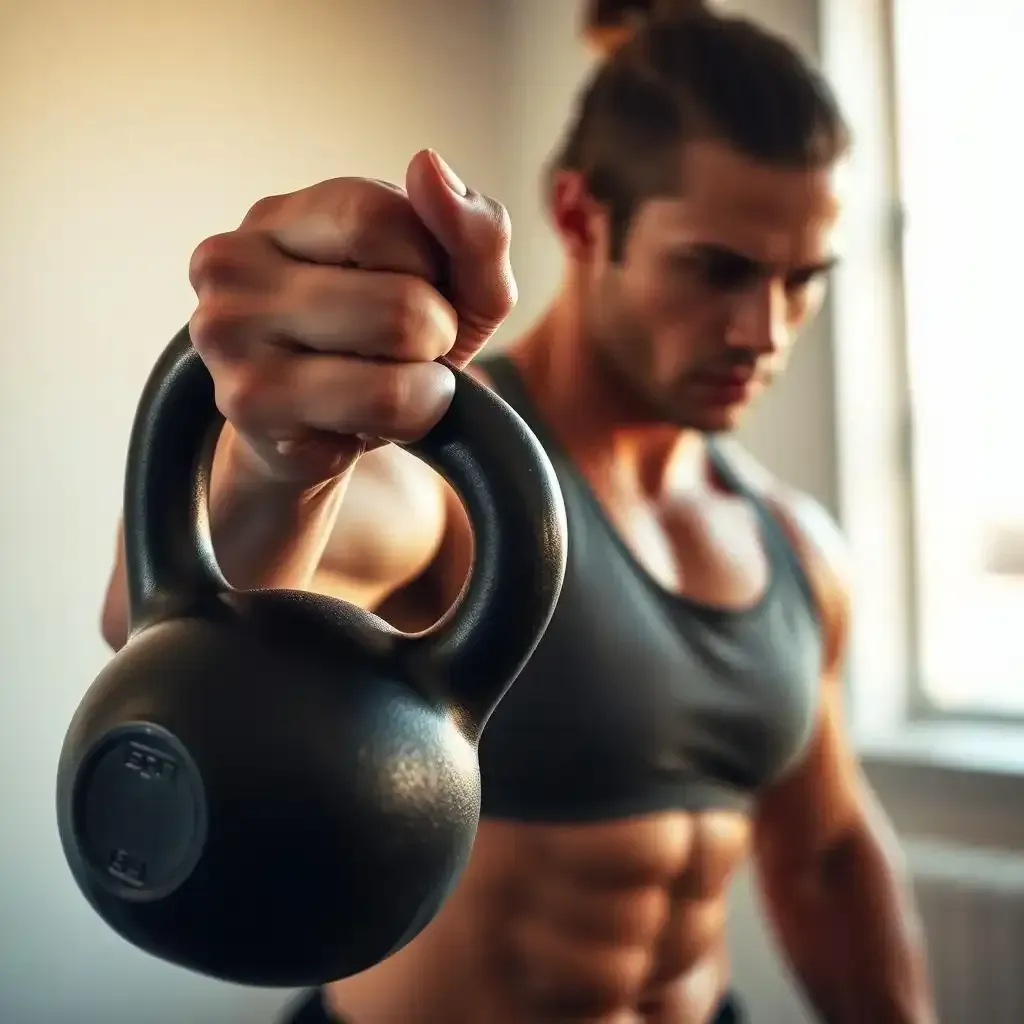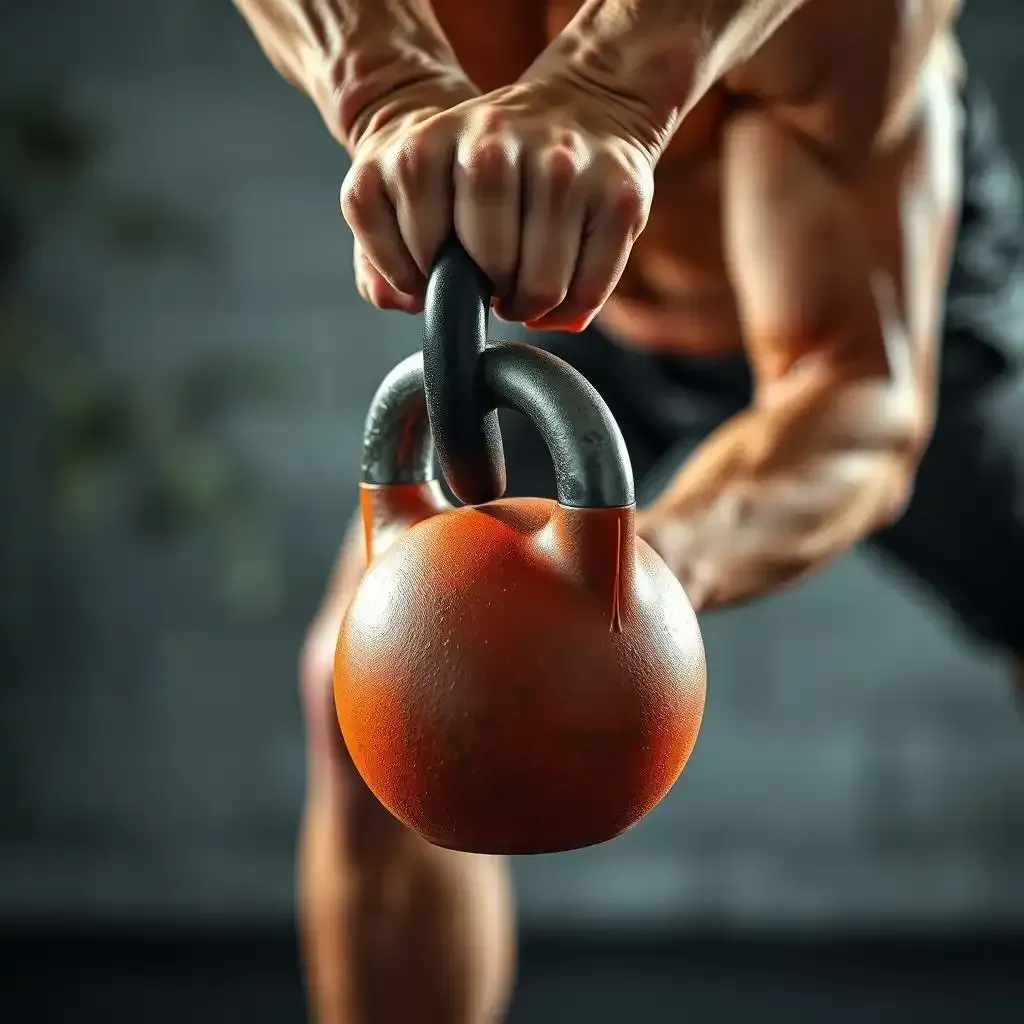Table of Contents
Are you ready to take your kettlebell workouts to the next level? Understanding the different kettlebell grip types is crucial for maximizing your performance and ensuring safety. Whether you're a beginner or a seasoned athlete, the right grip can make a world of difference. In this article, we'll investigate into the five most common kettlebell grip types, including the hook grip, rack position, overhead lockout, and two-handed grip. We'll explore how each grip is used, its benefits, and tips for mastering it. By the end, you'll have a solid grasp of the techniques that will raise your kettlebell training. So, let's get started and reveal your full potential with kettlebellworkout.homes!
Understanding the Hook Grip in Kettlebell Training

Understanding The Hook Grip In Kettlebell Training
Hey there, fellow kettlebell enthusiast! Let's talk about the hook grip – it's a game-changer, trust me. Think of it like this: you're not just *holding* the kettlebell, you're *owning* it. It's all about that secure, almost aggressive grip that lets you really let loose the capability of those swings and snatches. It's not the easiest grip to master, but once you get it down, you'll wonder how you ever lived without it. It's like finally finding the perfect pair of running shoes – your performance just gets that much better.
Imagine trying to do a kettlebell swing with a weak grip. It’s a recipe for disaster! The kettlebell could slip, you could drop it (ouch!), or worse, you might injure yourself. The hook grip prevents all of that by creating an incredibly strong association between your hand and the handle. It's all about using your thumb to secure the handle, preventing the kettlebell from flying out of your grasp. It's like adding an extra layer of safety and control to your movements. Need more kettlebell workout ideas? Check out our beginner kettlebell routines!
Grip Type | Description | Best For |
|---|---|---|
Hook Grip | Thumb tucked under fingers | Swings, snatches |
Standard Grip | Thumb alongside fingers | Less dynamic movements |
Now, I know what you’re thinking: “Sounds complicated!” It can feel a little strange at first, kind of like learning to ride a bike. But stick with it. Start with lighter kettlebells to get the feel of it, and gradually increase the weight as your grip strength improves. Practice makes perfect, and soon, you'll be hooking that kettlebell like a pro. Need a little help with your form? Check out our kettlebell form guide for some helpful visuals.
Here’s a tip: don't be afraid to experiment! Find the grip that feels the most comfortable and secure *for you*. Every hand is different, so what works for one person might not work for another. The key is finding that sweet spot where you feel totally in control of the kettlebell, ready to release its strength. Want to learn some easy kettlebell exercises? Check out our easy kettlebell exercises page!
- Start with lighter weights.
- Practice regularly.
- Listen to your body.
Remember, safety first! If you ever feel any pain or discomfort, stop immediately and rest. Don't push yourself too hard, especially when you're first learning a new grip. Progress takes time; be patient with yourself, and celebrate your victories along the way. Need some extra safety tips? Check out our kettlebell safety tips page.
Mastering the Rack Position for Kettlebell Exercises
Let's talk about the rack position – it's a fundamental grip in kettlebell training that's often overlooked, but trust me, it's a game-changer. The rack position is a versatile grip that allows you to perform a variety of exercises, from squats to presses, with ease and control. So, what is the rack position, and how do you master it?
Simply put, the rack position involves holding the kettlebell at your chest, with your elbow bent at a 45-degree angle and your forearm parallel to the ground. It's essential to keep your core engaged and your back straight to maintain proper form. The rack position is an excellent grip for exercises like squats, lunges, and presses, as it allows you to generate capability and control throughout the movement.
Check out our beginner kettlebell routines to learn more about getting started with kettlebell training.
Grip Type | Description | Best For |
|---|---|---|
Rack Position | Kettlebell held at chest level, elbow bent at 45 degrees | Squats, lunges, presses |
To master the rack position, start by practicing with lighter weights and focus on proper form. Keep your core engaged, your back straight, and your elbow bent at a 45-degree angle. As you become more comfortable with the grip, you can gradually increase the weight and try more complex exercises. Remember to always prioritize proper form and safety when training with kettlebells.
- Start with lighter weights and focus on proper form
- Keep your core engaged and your back straight
- Gradually increase the weight as you become more comfortable with the grip
By mastering the rack position, you'll be able to open up a new level of capability and control in your kettlebell training. So, take the time to practice, and you'll be reaping the rewards in no time. Remember to check out our kettlebell workout tips for more advice on how to improve your training.
Exploring the Overhead Lockout Grip for Stability

Exploring The Overhead Lockout Grip For Stability
Okay, so we've talked about the hook grip and the rack position, but now let's get to the overhead lockout. This one's all about stability, like having a really steady tripod for your camera – it keeps everything super secure. Think of it as the ultimate ability pose for your kettlebell exercises. You're holding that kettlebell high above your head, and you want to feel completely confident and in control. No wobbles allowed!
Imagine trying to do a military press with a shaky grip. It's like trying to balance a stack of pancakes on your head while riding a unicycle – it's not going to end well! The overhead lockout grip helps you avoid that kind of disaster by providing a rock-solid foundation. It's all about using your whole body to support the weight, keeping your core tight, and your shoulders stable. It’s like building a strong tower, brick by brick, until you've got an unbreakable structure. For more kettlebell exercises that focus on core stability, check out our core exercises.
Grip Type | Description | Best For |
|---|---|---|
Overhead Lockout | Kettlebell held overhead, arms fully extended | Presses, overhead work |
Now, mastering this grip takes practice, just like learning to juggle. It's not something that happens overnight. You'll need to build up your shoulder and core strength to maintain that steady position. Start with lighter weights and focus on maintaining good form, and gradually increase the weight as you feel more confident. Need some ideas for beginner kettlebell routines? Visit our page!
One thing I always tell my students is to pay attention to your body. If you feel any pain or discomfort, stop immediately. Don't push yourself too hard, especially when you're first starting out. It’s like learning to play a musical instrument – you wouldn’t push yourself to play a complex concerto on day one, would you? Take your time, focus on proper form, and you'll be surprised at how quickly you progress. You can also check out our for more information.
- Start with lighter weights
- Focus on proper form
- Listen to your body
Remember, the overhead lockout isn't just about strength; it's about control and stability. It's about that feeling of complete confidence as you hold that kettlebell high above your head. It's a testament to your hard work and dedication. Want to explore more kettlebell exercises for beginners? See our starter exercises!
Two-Handed Grip and High Volume Ballistics

Two Handed Grip And High Volume Ballistics
The Two-Handed Grip: Your Friendly Giant
Now, let's talk about the two-handed grip. This one's perfect for those heavier kettlebells – think of it as your trusty workhorse. It's all about stability and capability, especially when you're doing those high-rep exercises. It's like having a really strong friend helping you lift something heavy – much easier than doing it alone, right? You'll find this grip particularly helpful for exercises like the two-handed kettlebell clean and press or the two-handed swing. It's a great way to build serious strength and endurance.
I remember the first time I tried a two-handed kettlebell clean. I was using a 40-pounder, which felt like a small car at the time! My arms were shaking, but the two-handed grip gave me that extra stability I needed to complete the movement. It was a victory moment, a true testament to the ability of a good grip. Feeling a little lost? Check out our kettlebell basics guide for more info!
- Use a firm, even grip
- Keep your wrists straight
- Engage your core
High-Volume Ballistics: Taking it to the Next Level
High-volume ballistics are all about that explosive ability. Think of it as a controlled explosion – you're building up that energy and then releasing it in a powerful burst. It's like launching a rocket into space – you need a strong foundation and precise movements to achieve that awesome launch. Exercises like kettlebell snatches, push presses, and cleans fall into this category. They really challenge your body in a fun way, pushing both your strength and endurance.
I've always loved the challenge of high-volume ballistics. It's that sweet spot where you're pushing your limits, feeling that burn, and seeing real results. But remember, safety is key. Start with lighter weights and focus on your form. It's like learning a new dance move – you wouldn't jump straight into a complicated routine without practicing the basics first, would you? Mastering your form will keep you safe and prevent injuries. Need more kettlebell exercises? Check out our !
Exercise | Grip Type | Focus |
|---|---|---|
Kettlebell Snatch | Hook Grip or Two-Handed | Explosive Strength |
Kettlebell Push Press | Two-Handed | Shoulder Strength |
Final Thought
Understanding the different kettlebell grip types is more than just a technicality; it's a key to unlocking your full potential in kettlebell training. Whether you're using the hook grip for dynamic movements, the rack position for stability, or the two-handed grip for ability, each technique has its unique benefits. By mastering these grips, you'll not only improve your performance but also reduce the risk of injury. So, the next time you pick up a kettlebell, remember the tips and tricks we've covered. Happy training, and don’t forget to visit kettlebellworkout.homes for more tips and workouts!